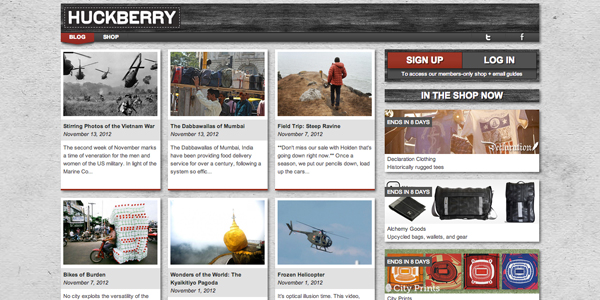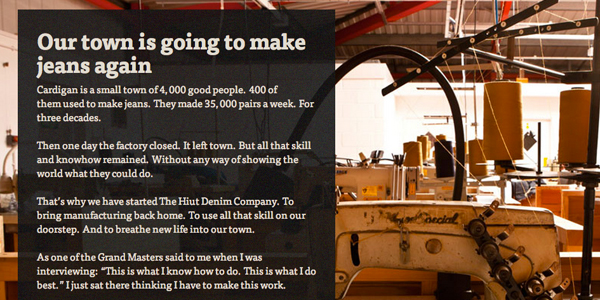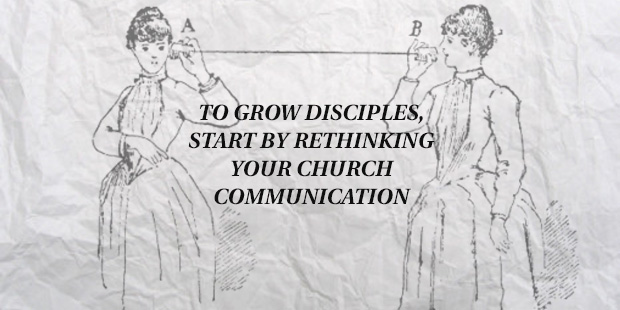
Wal-Mart vs. Mom & Pop Stores: The Power of Branding and How It Can Help Your Church
I’m not ashamed to admit that one of my favorite movies is You’ve Got Mail with lead actors Tom Hanks and Meg Ryan. Ryan’s character runs a small independent bookshop in Manhattan, while Hanks’s character is opening a large retail bookstore with low prices (if only he’d known how technology would change the way we read) just down the block.
In the late 1990s, when the movie was made, this was a common story line. What were small businesses going to do when Borders, Walmart, Kmart and Target moved into town? How could they compete with rock-bottom prices and one-stop shopping?
To be honest, I thought the movie would end with Ryan’s Shop Around the Corner somehow spared by Hanks’s Fox Books store because of their anonymous online romance, which (spoiler alert!) materializes at the end of the movie. It doesn’t. Her shop still goes out of business. Even in the movies, the big-box store wins.
It seemed as though the growth of these massive retailers would only continue, leaving in its wake a trail of broken entrepreneurial dreams and century-old businesses too small to compete. In an economy like ours, in which the dollar is still weak and many are unemployed, such an outcome was almost a sure bet.
In 2014, that’s hardly the case.
The growth of digital (namely social) media—its early forms chronicled in You’ve Got Mail—has provided a marketing weapon for small brands. The antithesis of big-box stores, artisanal brands are sprouting and flourishing in the post-advertising age.
These small brands are built with a focus on craftsmanship, hometown pride, storytelling, a clear purpose and spot-on branding. They’ve made their businesses unique and provide consumers much of what big-box stores can never offer.
Artisanal brands can teach the church a lot about effective content marketing. Here are 10 lessons:
1. ENDEAR AUDIENCES TO THE BRAND THROUGH A WORTHWHILE MISSION
You can buy a pair of jeans 80 percent cheaper at Target, but Hiut Denim’s commitment to its mission, to go back to making jeans in Cardigan in the UK—where for three decades a factory, now closed, made 35,000 pairs a week—helps keep the Welsh town afloat. Knowing that your purchase is keeping craftsmen employed in a town that depends on manufacturing may very well make it worth it. We mentioned Hiut Denim in a recent post about brands doing post-advertising right. When they heard they made our list, they sent a direct message via Twitter that said, “Thanks for help. The town is grateful.” How cool is that?
What’s your mission and how are you furthering it?
2. GET YOUR AUDIENCE INVOLVED IN THE CONVERSATION, EVEN IF THEY’RE JUST LISTENING
One of the keys to building a brand from the ground up is to ensure that the talkable products and content you’re creating have an audience that can share them. A number of brands, including Best Made Company and Herschel Supply Co., have well-designed pop-ups on their websites that greet you with the option of opting into their mailing lists. Even their pop-ups, like their products, are custom made.
Are you giving your audience ways to opt-in to receive your content?
3. PRACTICE WHAT YOU PREACH  With artisanal brand’s higher price point and lower consumer penetration (compared with nationwide brands), it’s imperative that staff members showcase themselves using the same products that they champion. The staff of Huckberry recently posted on the active-lifestyle company’s blog an article chronicling a recent camping trip they took, a trip on which they used and reviewed a number of products Huckberry sells.
With artisanal brand’s higher price point and lower consumer penetration (compared with nationwide brands), it’s imperative that staff members showcase themselves using the same products that they champion. The staff of Huckberry recently posted on the active-lifestyle company’s blog an article chronicling a recent camping trip they took, a trip on which they used and reviewed a number of products Huckberry sells.
Does your audience know you believe in your product or service?
4. TURN THE PURCHASE INTO A STORY ABOUT A LONG-TERM RELATIONSHIP  A focus on craftsmanship often means that the product will last a long time. While your run-of-the-mill CPG brand will try to sell you a cheap product that rarely makes it past one use, an artisanal brand helps customers understand why its price points are appropriate. Whether it’s a made-to-order ax from Best Made Company or a backpack from Herschel Supply Co., its higher price point makes sense because the brand has conveyed a transparent story that helps customers see the value, literally.
A focus on craftsmanship often means that the product will last a long time. While your run-of-the-mill CPG brand will try to sell you a cheap product that rarely makes it past one use, an artisanal brand helps customers understand why its price points are appropriate. Whether it’s a made-to-order ax from Best Made Company or a backpack from Herschel Supply Co., its higher price point makes sense because the brand has conveyed a transparent story that helps customers see the value, literally.
What story is the craftsmanship of your product or execution of your service telling?
5. USE A CONSISTENT AND RELATABLE TONE OF VOICE  One of the best aspects of artisanal brands I’ve found while researching is that they convey a consistent tone of voice across all channels. Rarely do you find typical corporate brand jargon. You won’t hear that their products are industry leading, on demand or turnkey. Instead, the voice is friendly and down-to-earth and offers glimpses behind the scenes that help humanize the brand.
One of the best aspects of artisanal brands I’ve found while researching is that they convey a consistent tone of voice across all channels. Rarely do you find typical corporate brand jargon. You won’t hear that their products are industry leading, on demand or turnkey. Instead, the voice is friendly and down-to-earth and offers glimpses behind the scenes that help humanize the brand.
Are you speaking the same language as your audience?
6. OFFER A STEADY DIET OF CONTENT  Particularly because these brands are so small, and you won’t find Warby Parker frames at Sunglass Hut or Hiut Denim jeans at Macy’s, it’s imperative that artisanal brands constantly create content for their audiences to keep the brands top of mind. Many brands create extensive Pinterest and Tumblr pages, blogs, films, social content and more to keep a constant connection with their audience.
Particularly because these brands are so small, and you won’t find Warby Parker frames at Sunglass Hut or Hiut Denim jeans at Macy’s, it’s imperative that artisanal brands constantly create content for their audiences to keep the brands top of mind. Many brands create extensive Pinterest and Tumblr pages, blogs, films, social content and more to keep a constant connection with their audience.
Are you creating enough content to remain on your customer’s mind?
7. DESIGN MATTERS  Artisanal brands take pride in the way everything about their brands looks, not just the products themselves. If you want your audience to believe that your product is good, your branding had better reflect it.
Artisanal brands take pride in the way everything about their brands looks, not just the products themselves. If you want your audience to believe that your product is good, your branding had better reflect it.
Have you paid enough attention to design, particularly on your digital channels?
8. EMBRACE LOCAL  Now that big-box stores are in nearly every town in the United States, it’s difficult for them to “represent” their “homes.” But an artisanal brand often depends on its hometown—the place that defines the brand and its employees. Warby Parker’s site proudly links to the Made in NYC site which lists the “internet companies made with ♥” in New York City. The staff of Huckberry often writes about San Francisco–related topics, such as the city’s being a “bastion of the bean.”
Now that big-box stores are in nearly every town in the United States, it’s difficult for them to “represent” their “homes.” But an artisanal brand often depends on its hometown—the place that defines the brand and its employees. Warby Parker’s site proudly links to the Made in NYC site which lists the “internet companies made with ♥” in New York City. The staff of Huckberry often writes about San Francisco–related topics, such as the city’s being a “bastion of the bean.”
What’s unique about your brand’s home? Does your audience know?
9. ENCOURAGE USER-GENERATED CONTENT  Warby Parker and Herschel Supply urge customers to submit photos of themselves with the product. Warby Parker puts the pictures on its Facebook Wall and encourages users to vote for their favorite pair, while Herschel Supply includes the photos on its Tumblr page.
Warby Parker and Herschel Supply urge customers to submit photos of themselves with the product. Warby Parker puts the pictures on its Facebook Wall and encourages users to vote for their favorite pair, while Herschel Supply includes the photos on its Tumblr page.
Are you tapping your audience for content?
10. EMPOWER YOUR CUSTOMERS TO CREATE STORIES OF THEIR OWN  I bought a pre-owned Ford Escape (which I love) from a dealership back in January. In a fairly hidden compartment, I found a CD of hymns and some other items that led me to believe the car might previously have been owned by a member of the clergy. Hopefully that means he didn’t speed much. But in reality, I’ll never know. Hiut Denim puts a unique history tag on all its jeans that when entered on the brand’s HistoryTag website allows a customer to craft a story about the purchased product by uploading pictures of where he went in the jeans, what he did and whom he did it with. If ever someone else were to receive the jeans as a hand-me-down or buy them secondhand at a consignment shop, that person would know where they’d been (for better or for worse, I suppose).
I bought a pre-owned Ford Escape (which I love) from a dealership back in January. In a fairly hidden compartment, I found a CD of hymns and some other items that led me to believe the car might previously have been owned by a member of the clergy. Hopefully that means he didn’t speed much. But in reality, I’ll never know. Hiut Denim puts a unique history tag on all its jeans that when entered on the brand’s HistoryTag website allows a customer to craft a story about the purchased product by uploading pictures of where he went in the jeans, what he did and whom he did it with. If ever someone else were to receive the jeans as a hand-me-down or buy them secondhand at a consignment shop, that person would know where they’d been (for better or for worse, I suppose).
How is your audience telling stories about your product/service?
These small, passionate brands are carving out niches and taking risks in the content-marketing space that many larger, inflexible brands only wish they could take. Even if you’re not in the market for an ax, an outdoor frying pan or a wallet, make sure you follow them. There’s a lot to learn.
Read more from Jon here.

Tags: Attention, Awareness, Brand, Jon Thomas

































